
CONTINUUM MECHANICS AND THERMODYNAMICS
Scope & Guideline
Driving Progress in Mechanics and Thermodynamic Applications
Introduction
Aims and Scopes
- Thermoelasticity and Thermodynamics:
The journal emphasizes studies related to thermoelastic materials, exploring their mechanical and thermal responses under various conditions. Research often includes the development of new models and theories that integrate thermodynamic principles with elastic behavior. - Multiscale Modeling and Simulations:
A significant focus is placed on multiscale approaches that bridge different levels of material behavior, from atomic to macroscopic scales. This includes computational techniques like finite element analysis and peridynamics. - Material Behavior and Properties:
Research on the mechanical properties of various materials, including polymers, composites, and metals, is central to the journal. This encompasses studies on viscoelasticity, plasticity, and the effects of microstructure on macroscopic properties. - Metamaterials and Advanced Materials:
The journal highlights innovative research on metamaterials, which exhibit unique mechanical and thermal properties due to their engineered microstructures. This includes investigations into their design, fabrication, and applications. - Nonlinear Dynamics and Stability Analysis:
Studies addressing the nonlinear dynamic behavior of materials and structures, including stability analysis and failure mechanisms, are frequently published. This includes the exploration of dynamic loading conditions and their effects on material response. - Biomechanics and Biological Materials:
The journal also covers topics at the intersection of mechanics and biology, focusing on the mechanical behavior of biological tissues and materials. This includes modeling of soft tissues and their mechanical interactions during physiological processes.
Trending and Emerging
- Advanced Computational Methods:
There is a growing emphasis on advanced computational techniques such as machine learning and artificial intelligence in modeling and simulating complex material behaviors. This trend indicates a shift towards data-driven approaches in continuum mechanics. - Thermo-mechanical Coupling in Materials:
Research focusing on the interplay between thermal and mechanical effects in materials is gaining traction. This includes studies on heat generation, thermal fatigue, and the impact of temperature on material properties. - Sustainability and Eco-friendly Materials:
The journal is increasingly publishing research on sustainable materials and eco-friendly manufacturing processes. This reflects a broader trend in the scientific community towards addressing environmental concerns through innovative material solutions. - Smart Materials and Structures:
Emerging research on smart materials that respond dynamically to environmental changes is on the rise. This includes investigations into materials with adaptive properties for applications in various engineering fields. - Biological and Biomechanical Applications:
There is a notable increase in studies related to biomechanics, particularly the mechanical behavior of biological tissues and their interactions with engineered materials. This trend showcases the integration of mechanics with biological sciences.
Declining or Waning
- Basic Theoretical Contributions Without Application:
There has been a noticeable reduction in purely theoretical papers that do not directly address practical applications or experimental validation. The journal appears to be favoring studies that demonstrate real-world relevance. - Traditional Elasticity Studies:
Research that strictly adheres to classical elasticity without incorporating modern advancements in materials science or computational methods has become less common. The focus has shifted towards more innovative and complex material behaviors. - Low-dimensional or Simplistic Models:
Papers that utilize overly simplistic models or low-dimensional analyses are declining. There is a growing preference for comprehensive models that capture the complexities of material behavior under various conditions. - Single-Scale Studies:
Research focusing solely on single-scale modeling without considering multiscale interactions is less frequently published. The trend is towards integrated approaches that encompass multiple scales of analysis.
Similar Journals

JOURNAL OF ELASTICITY
Bridging Theory and Application in Mechanical EngineeringJOURNAL OF ELASTICITY is a prestigious peer-reviewed journal dedicated to the study and advancement of the field of elasticity and its numerous applications across various disciplines. Published by SPRINGER, and located in the Netherlands, this journal has been a key resource since its inception in 1971, providing critical insights and developments up through 2024. With a commendable impact factor and categorized within the Q2 quartile in areas such as Materials Science, Mechanical Engineering, and Mechanics of Materials, the journal maintains a significant standing in the academic community. Researchers and professionals will find a wealth of knowledge through advanced theoretical and experimental studies published within its pages, contributing to both foundational understanding and practical applications. While currently not an open access publication, the JOURNAL OF ELASTICITY remains an essential platform for innovative research and discussions that shape the future of mechanical sciences.

Journal of Computational Applied Mechanics
Exploring New Dimensions in Mechanical EngineeringJournal of Computational Applied Mechanics, published by UNIV TEHRAN, DANISHGAH-I TIHRAN, is an influential open-access journal that has been disseminating significant research findings since its inception in 2012. With a dedicated focus on the fields of Computational Mechanics, Mechanical Engineering, and Mechanics of Materials, this journal has garnered a Q3 ranking in multiple relevant categories as of 2023, indicating its burgeoning impact within the academic community. Although precise HIndex scores are currently unavailable, the journal's recognition is underscored by its Scopus rankings, placing it in the middle tier among its peers. The journal invites researchers, professionals, and students to contribute to and engage with the continually evolving discourse in applied mechanics, fostering innovation through the dissemination of quality research. As an open-access journal, it ensures that findings are readily accessible to a global audience, thereby enhancing collaboration and knowledge sharing in the scientific community.

Physical Mesomechanics
Fostering collaboration for groundbreaking discoveries in mesomechanics.Physical Mesomechanics is a distinguished journal published by SPRINGER, focusing on the interdisciplinary field of condensed matter physics, materials science, and mechanics of materials. With an ISSN of 1029-9599 and an E-ISSN of 1990-5424, this journal serves as an essential platform for researchers, professionals, and students to share and disseminate high-quality research findings. It is recognized for its significant impact, boasting a Q2 ranking in 2023 across multiple categories including Condensed Matter Physics and Materials Science, ensuring a substantial scholarly contribution to the field. Despite being a subscription-based journal, its reputation within the academic community remains robust, underlined by its comprehensive coverage of topics related to the behavior of materials at the mesoscopic scale. The journal promises to further enhance its importance in the scientific dialogue by encouraging submissions that push the boundaries of current knowledge from 2004 to 2024, fostering innovation and collaboration among researchers globally.

Moscow University Mechanics Bulletin
Navigating the Future of Engineering and MechanicsMoscow University Mechanics Bulletin, published by PLEIADES PUBLISHING INC, is a dedicated journal that has been influencing the fields of mechanical engineering and mechanics since its inception. With an ISSN of 0027-1330 and E-ISSN of 1934-8452, this journal serves as a crucial platform for advancing knowledge in mathematics, mechanical engineering, and mechanics of materials. Though currently indexed in the Q4 category across these disciplines, it offers a unique space for researchers and professionals to engage with emerging theories, experimental results, and practical applications. With a converged publication history spanning from 1973 to 1987, and continuing from 2007 to 2024, the journal remains relevant in today’s academic landscape. Though it operates under traditional access models, the journal's global reach aims to connect diverse voices in engineering research. Aspiring researchers and seasoned professionals alike will find valuable insights and a robust discourse that contribute to their respective fields.
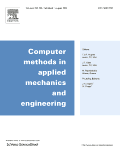
COMPUTER METHODS IN APPLIED MECHANICS AND ENGINEERING
Elevating Knowledge in Computational Methods and Mechanical Engineering.COMPUTER METHODS IN APPLIED MECHANICS AND ENGINEERING, published by Elsevier Science SA, is a premier journal that has significantly contributed to the fields of computational mechanics, computer science applications, mechanical engineering, and the mechanics of materials since its inception in 1972. With an ISSN of 0045-7825 and an E-ISSN of 1879-2138, this journal is recognized for its rigorous peer-review process and is consistently ranked in the Q1 quartile across multiple categories, including Computational Mechanics and Mechanical Engineering. Its impressive Scopus rankings place it in the top tiers of its field, with a percentile ranking of 98th in Computational Mechanics. Researchers, professionals, and students will find the journal's comprehensive scope and high-quality articles invaluable for advancing their knowledge and practices at the intersection of engineering and computation. Although not an open-access journal, its impactful contributions to both theoretical and applied research make it an essential resource for anyone involved in these dynamic fields.
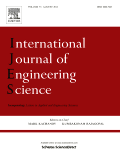
INTERNATIONAL JOURNAL OF ENGINEERING SCIENCE
Pioneering Innovations in Engineering and Materials ScienceInternational Journal of Engineering Science, published by Pergamon-Elsevier Science Ltd in the United Kingdom, stands as a premier platform for pioneering research in the diverse fields of engineering and materials science. Since its inception in 1963, this journal has consistently demonstrated its commitment to advancing academic discourse, maintaining an impressive trajectory that positions it in the Q1 category across multiple engineering disciplines including Mechanical Engineering and Mechanics of Materials as of 2023. With notable Scopus rankings—placing it in the top 5% percentile for Mechanical Engineering and related fields—this journal attracts high-quality, impactful research designed for both industry practitioners and academic scholars. Although it does not currently offer Open Access options, its readership is enriched by comprehensive peer-reviewed articles, fostering a deeper understanding of complex engineering problems and innovative solutions. The International Journal of Engineering Science continues to be an invaluable resource for researchers, professionals, and students committed to pushing the boundaries of knowledge in engineering and materials science.
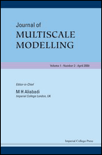
Journal of Multiscale Modelling
Unraveling Complex Systems Across Multiple ScalesWelcome to the Journal of Multiscale Modelling, a reputable publication dedicated to advancing the fields of Modeling and Simulation and Computer Science Applications. Published by World Scientific Publishing Co Pte Ltd in Singapore, this journal serves as a vital resource for researchers, professionals, and students seeking to explore the intricate relationships between various scales of modeling systems. Since its inception in 2009, the journal has established a pivotal role within the academic community, evidenced by its Q4 ranking in both its respective categories and its interests in contributing to the understanding of complex systems through innovative simulation techniques. With an ISSN of 1756-9737 and an E-ISSN of 1756-9745, the journal encourages submissions that push the boundaries of current knowledge and methodologies. Though currently not open access, articles published in this journal are recognized for their scholarly rigor and innovation, aiming to foster collaboration across disciplines and enhance the practical applications of multiscale modeling techniques in various industries. Join us in exploring the vast potentials of multiscale modeling that lie ahead.

ARCHIVES OF MECHANICS
Connecting Researchers Through Open Access KnowledgeArchives of Mechanics, published by the Polish Academy of Sciences Institute of Fundamental Technological Research, is a distinguished open-access journal established in 1971 that has played a pivotal role in the dissemination of knowledge in the fields of Mechanical Engineering and Condensed Matter Physics. With its commitment to accessibility since adopting open access in 2022, this journal provides a platform for researchers, professionals, and students to share cutting-edge research findings and innovative methodologies. Although it currently holds a Q4 ranking in Condensed Matter Physics and a Q3 ranking in Mechanical Engineering for 2023, its comprehensive scope, which spans critical advancements in mechanical systems and materials science, positions it as a valuable resource for the academic community. Located in Warsaw, Poland, the journal continues to contribute significantly to the global discourse on mechanics and is dedicated to fostering new ideas that advance both theoretical and applied aspects of the discipline.
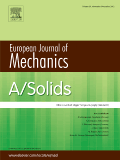
EUROPEAN JOURNAL OF MECHANICS A-SOLIDS
Charting New Territories in Material PhysicsThe EUROPEAN JOURNAL OF MECHANICS A-SOLIDS, published by ELSEVIER and based in the Netherlands, stands as a premier outlet for research in the field of solid mechanics. With an impressive track record since its inception, the journal has been indexed in prestigious categories including Materials Science, Mechanical Engineering, and Mathematical Physics, achieving Q1 quartile status across these domains in 2023. This recognition underscores the journal's impact, with Scopus rankings placing it in the top echelon of its respective fields, such as #39 in General Physics and Astronomy and #116 in Mechanical Engineering, demonstrating its significance and wide-reaching influence in the academic community. Scientists, engineers, and researchers are encouraged to submit their cutting-edge findings in areas related to solid mechanics, contributing to the journal's mission of advancing knowledge and innovation in this vital discipline. The journal's comprehensive scope allows for interdisciplinary engagement, making it an essential resource for professionals and students alike seeking to explore the latest developments in mechanics of materials and related areas.
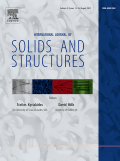
INTERNATIONAL JOURNAL OF SOLIDS AND STRUCTURES
Exploring New Dimensions in Applied MathematicsINTERNATIONAL JOURNAL OF SOLIDS AND STRUCTURES, published by PERGAMON-ELSEVIER SCIENCE LTD, is a leading academic journal with a strong reputation in the fields of engineering and applied mathematics. Established in 1965 and converging its impact on research through 2024, this journal is highly regarded within Q1 quartile rankings across multiple disciplines, including Applied Mathematics, Condensed Matter Physics, and Mechanical Engineering. With its ISSN 0020-7683 and E-ISSN 1879-2146, the journal is systematically indexed and accessible to a global audience, although it does not currently offer open access options. Researchers, professionals, and students alike benefit from its high-impact research articles, as evidenced by its impressive Scopus rankings in various categories, including a 91st percentile in Applied Mathematics and 81st in Mechanical Engineering. The journal serves as a critical platform for the dissemination of groundbreaking findings in solid and structural mechanics, promoting innovation and collaboration within the scientific community.